The Great Escape
Friendship Highway - Lhasa to Kathmandu

The Friendship Highway is the aspirationally-named trade route connecting Kathmandu in Nepal and Lhasa in Tibet. Not so long ago to travel its length was considered a serious challenge of forded rivers and washed out tracks, however as part of the Chinese Government’s modernization programme the road has received a new lease of tarmac. As a result trucks and expensively chartered Land Cruisers regularly run up and down its length and it feels a million miles from the areas of Tibet off the tourist radar.
We had not gone far down the highway before we passed two Scotsmen that we had met in Lhasa. They seemed to have a healthy approach to cycle touring – they had enjoyed Lhasa so much they had found it hard to leave so now could only hope to reach Kathmandu in good time by accepting lifts from passing Samaritans. They were cycling with trailers rather than panniers, artfully covered in old rice sacks in an attempt to “blend in”. Other than the trailers, essential cycling gear acquired for Tibetan autumn included motor-cycle style mitts and an immense thermos flask called something like “Bertha”. All of this we managed to load onto the roof rack along with our own possessions and two bikes, and with 5 of us in the car we made our way to Gyantse, dropping the cyclists just outside the town to avoid possible encounters with the police that might have made life difficult for our guide.
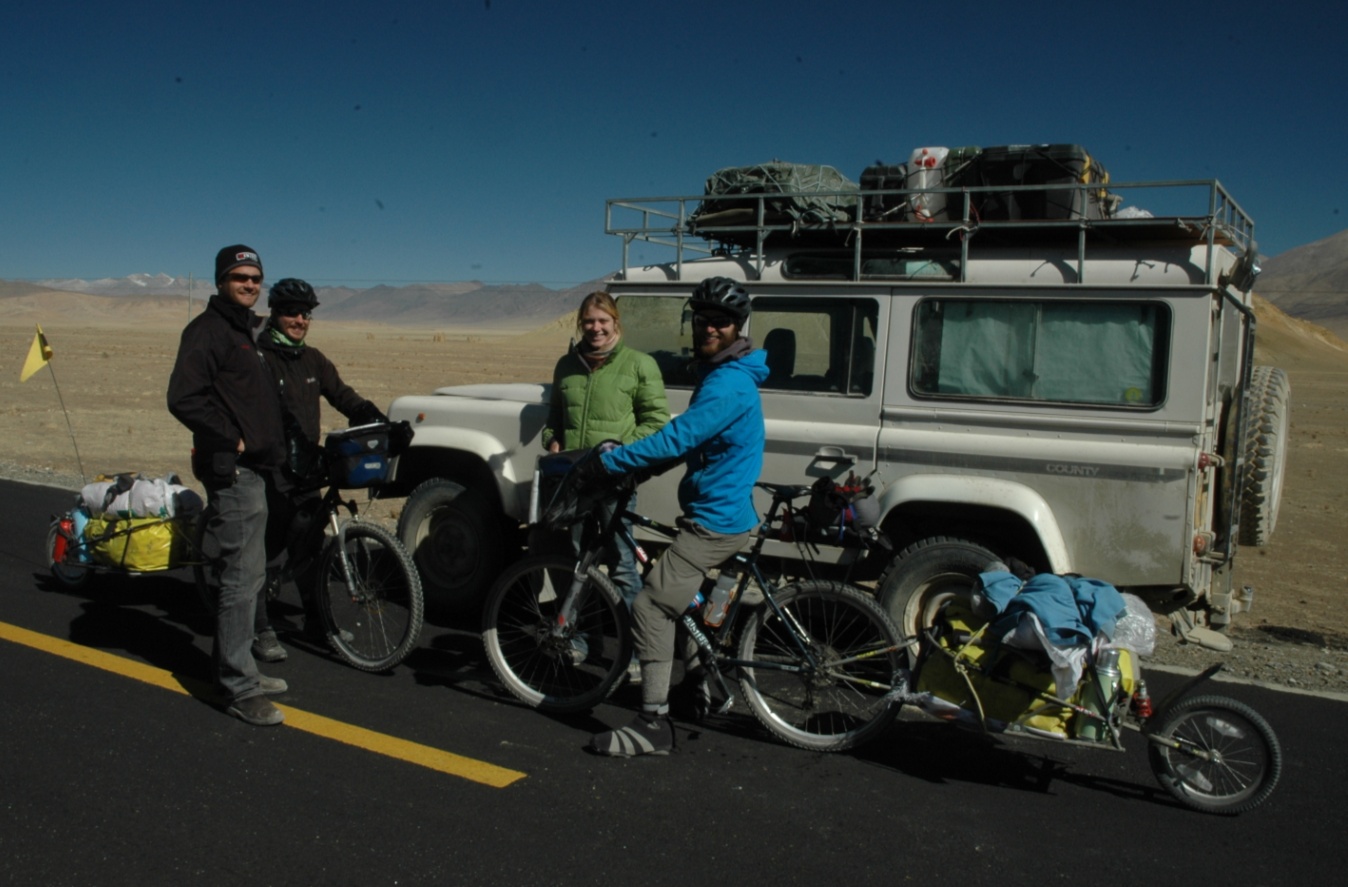
Gyantse is one of the more staunchly Tibetan towns however even here there is a sizeable Han Chinese population as well as some hideous monuments obstructing views of the Pelkhor Chode Monastery and Fort. We visited the monastery with its unusual woven Thankas: a usually painted banner mostly depicting scenes from the life of Buddha that take months or years to complete. On the way into the main assembly hall were a couple of antichambers whose dark soot stained walls display murals depicting sky burials with some grotesque images of the cadavers being presented to the Lammergeyer vultures. Outside the main Assembly hall is the Gyantse Kumbum, a Chorten or Stupa, whose 9 tiers and 108 chapels are guarded by three colorfully daunting guardian deities, their feet crushing the bones of tortured assailants.
We took a side trip to the fort, which is being renovated along with its heart-warmingly-named museum of anti-Englishness. This has very little to do with the English although its inspiration was the attempted invasion by the unlikely-named Younghusband who was beaten back after fighting the highest ever battle not far from the town. 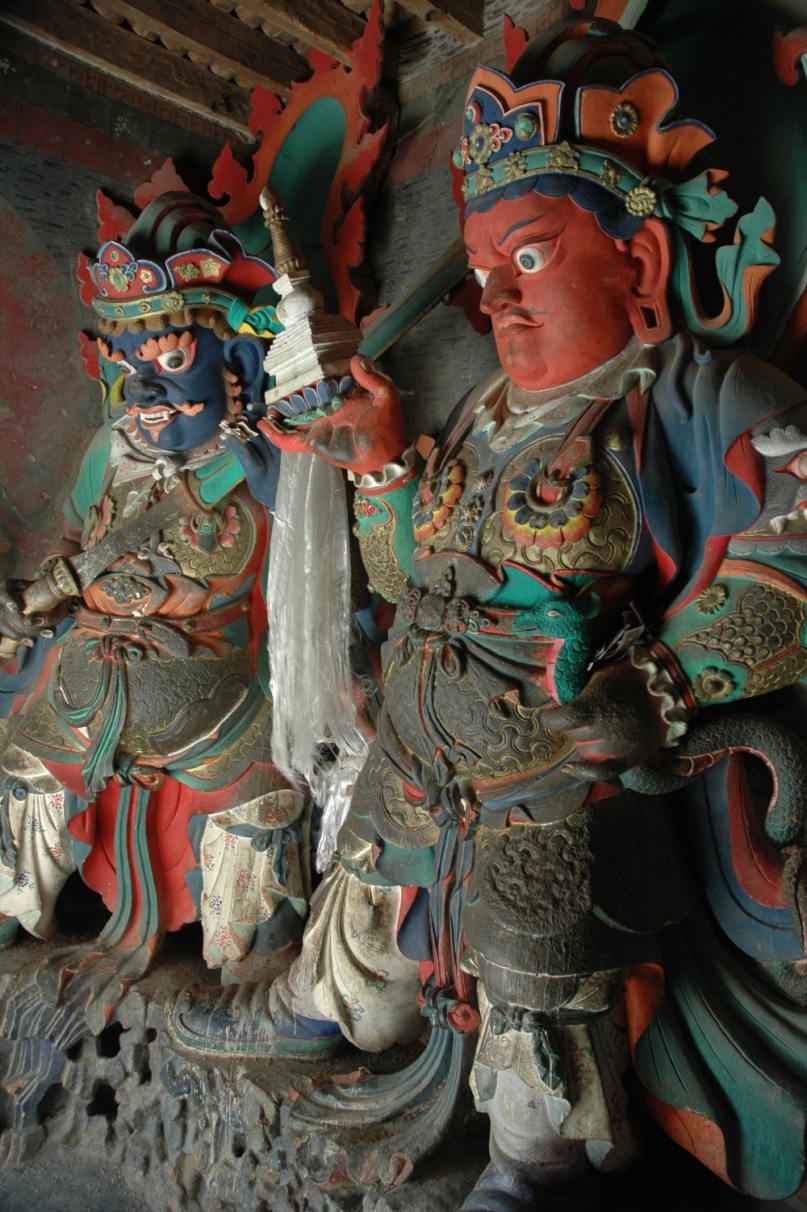
After Gyantse we carried on to Shigatse, Duncan suffering along the way with stomach trouble either brought on by a bacterial infection or possibly the altitude, which apparently can produce similar effects, termed HAFE by our Scots friends or high altitude flatulence effect.
In Shigatse, rather than pay the entrance fee for yet another monastery, we chose to take the long kora around its grounds. This is a beautiful hike over the hills above the town, its way lined with prayer wheels gleaming golden with the sun. As usual the kora was an event of great colour: even without the prayer wheels there were small shrines, stupas, mani stones and rock paintings as well as numerous pilgrims, prostrators and simply families and old folks out for a stroll. The koras once again displayed the human side of the religious fervor that imbues everything in Tibet. 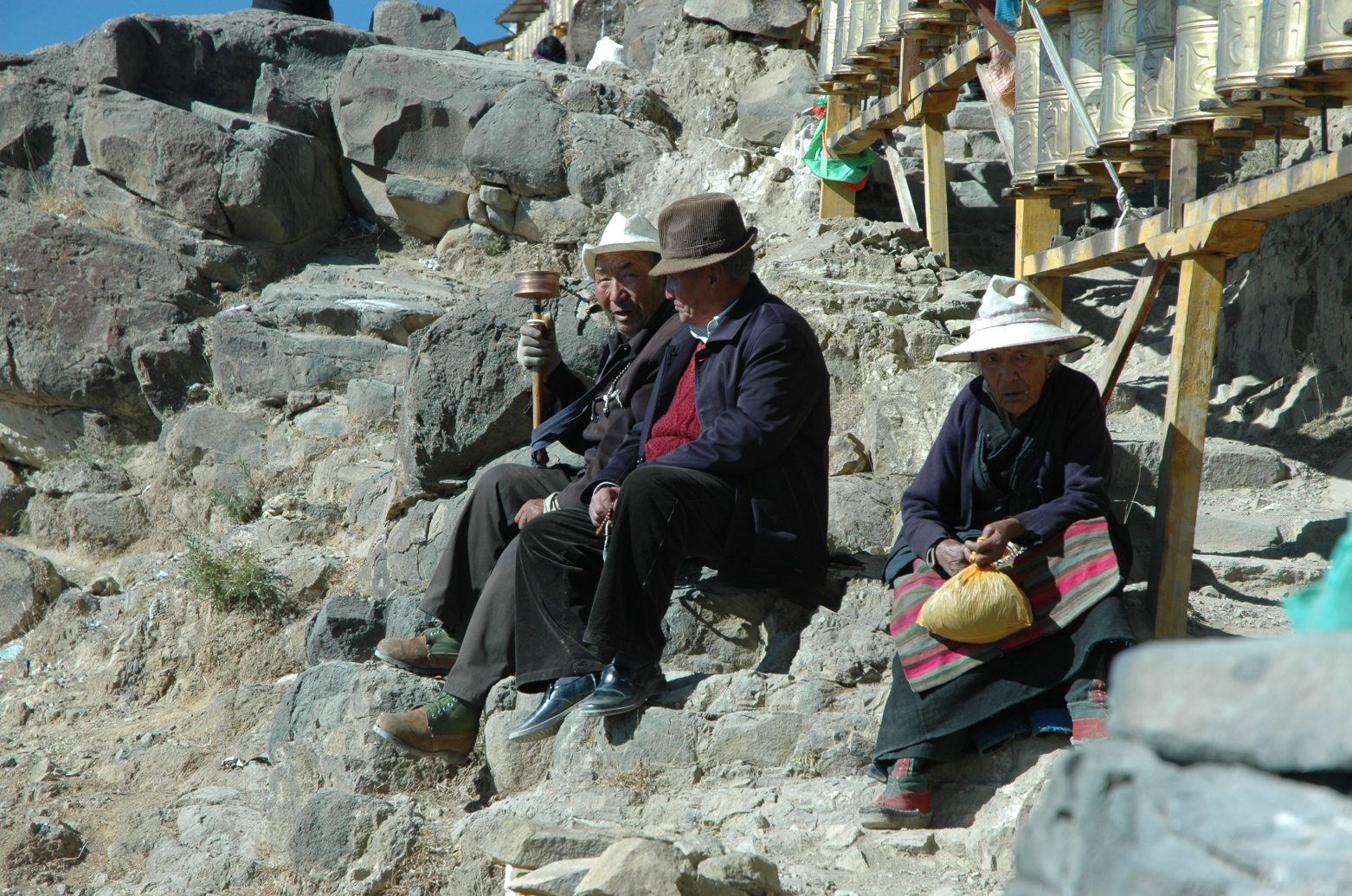
After a further day’s driving with another high pass we made the decision to continue up to Everest Base Camp. Although this was always on our itinerary we were wary of attempting it as it would mean a significant time above 5000m for Duncan, who was not used to altitude and who was recovering from his illness: however, how could we miss this!
The drive to Everest base camp and back is a long day of immense climbs on poor tracks with occasional jaw dropping views before descents into valleys lined with small villages refreshingly unspoiled by passing tourists. After the final police check point (goodness knows what they were checking for) we made our final ascent up to 5200m and the Base Camp, positioned with immense views up the valley to the North Face of Everest.
With no one around and not content with base camp we decided to ignore officialdom and continued on over a wide washed out area fording streams and dodging boulders until we could drive no further at the base of the terminal moraine. Again, there was no one about so we started walking, clambering over the moraine and up for about a km until we had an immense panorama of the glacier, surrounding peaks and the North Face terminating at the highest point in the world less than 3000m above us. We were buzzing with the immensity of the experience and could have carried on to even greater acts of stupidity if we were not so worried about the time taken to get back to the Guest House in the valley. 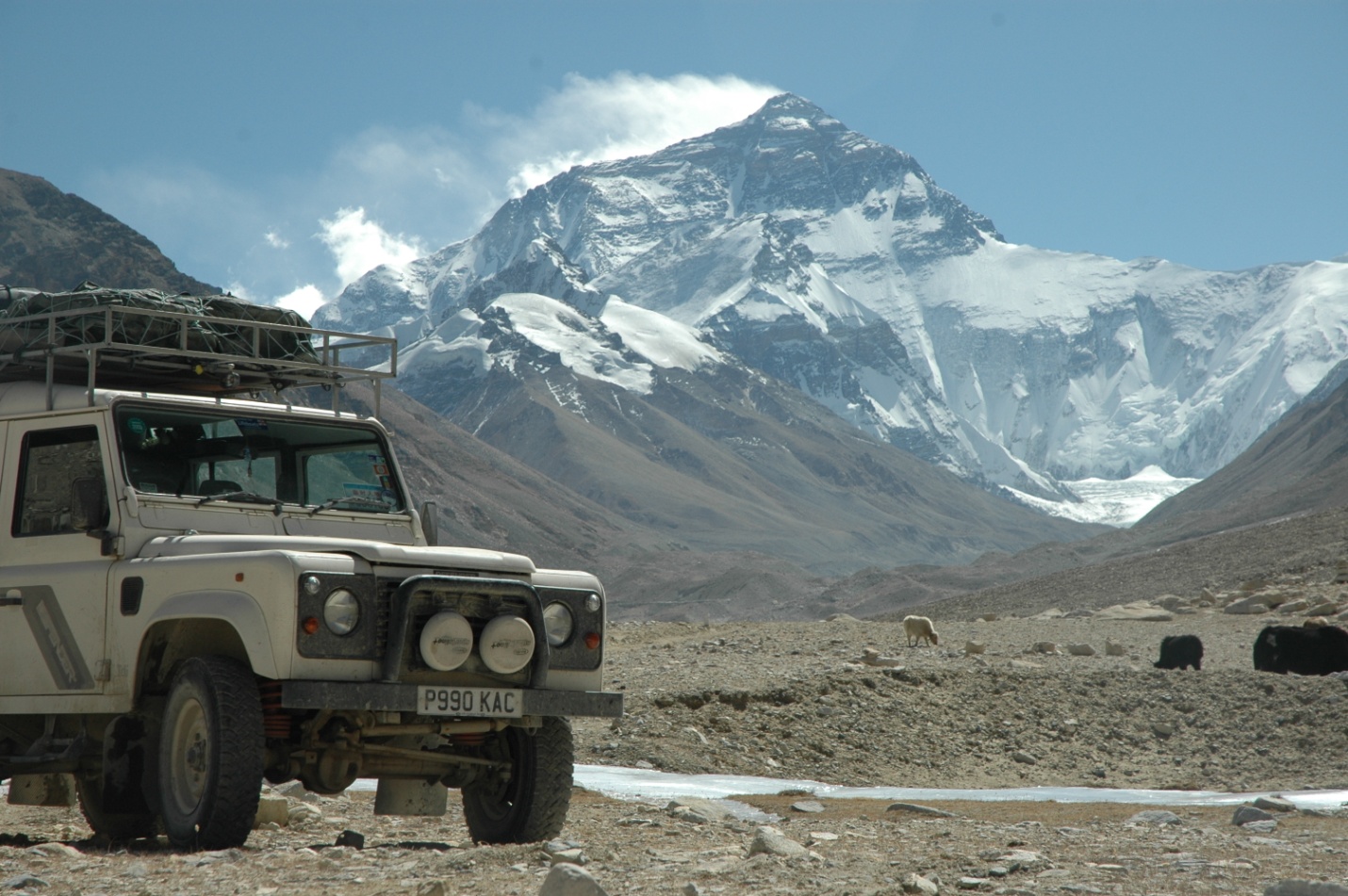
Once back on the main highway we headed out on our last full day of driving in Tibet. This stated with a climb to one of the highest points on the Friendship Highway, the Tong la at 4950m, before passing through a narrow gap in the Himalayas and dropping 4200m in roughly 160km: the longest road descent in the world. To get to the bottom would take two days and today was the first leg to the Chinese border town of Zhangmu.
As we drove downwards we started to notice changes in the landscape, subtle at first, however soon the valley narrowed, trees became more numerous and we started to think about taking off the down jackets that had hardly left our backs for a month. However, at the end of the day and for the last 30 or so km to the border we found ourselves driving along one precipitous face of a beautiful alpine valley. Tall conifers fringed the edges of closely overlapping ridges as the road picked its way around bum-clenching drops into white water below. 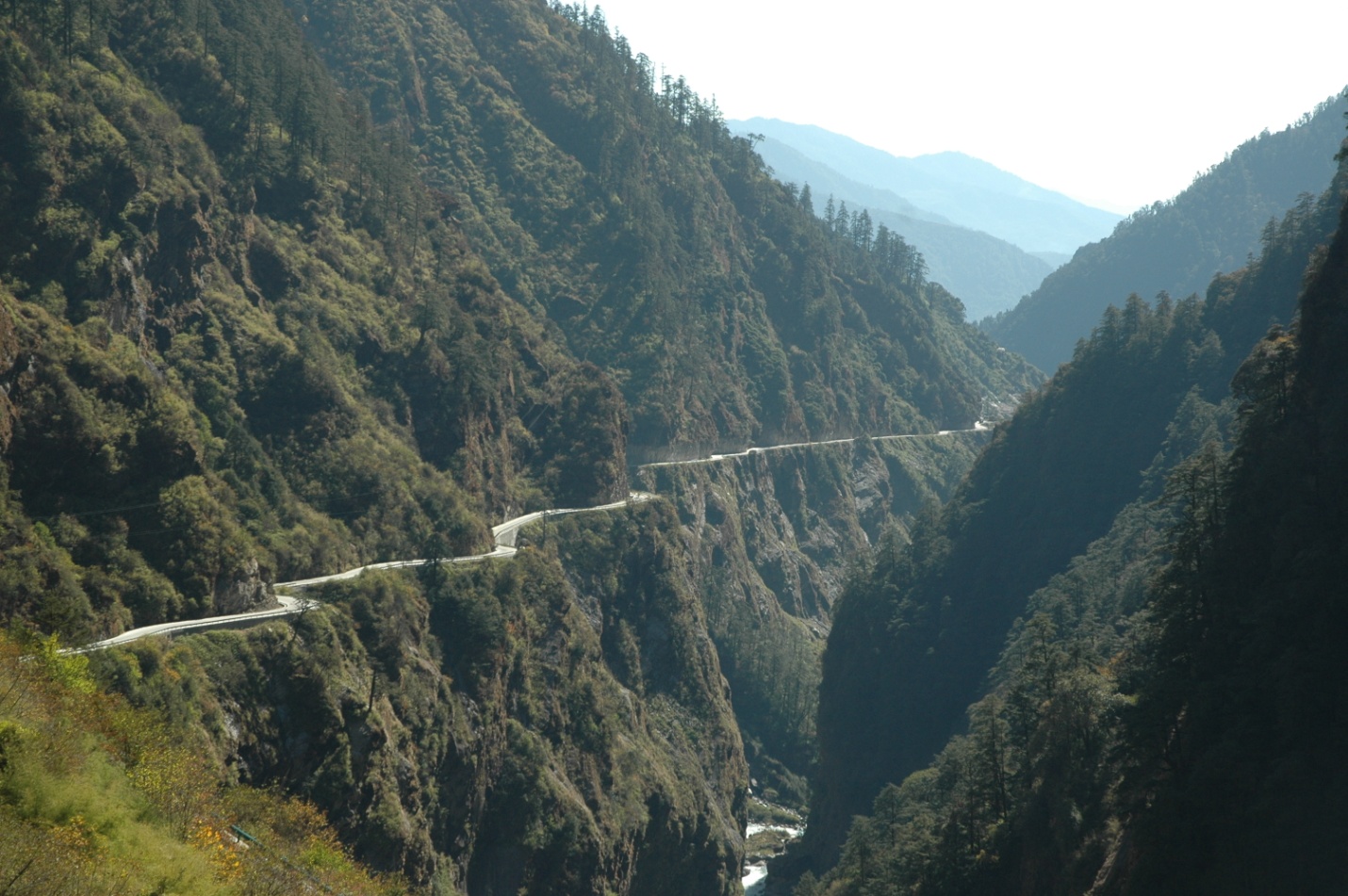
Our overnight was at Zhangmu, a border town that clings to the side of one of these drops. The houses and motels artfully arranged between switchbacks of the road so that the ground floor entered from the upper leg of the turn is the 4th floor reached from the lower. This is an inevitable stopover for trade entering and leaving Tibet and as such the streets are clogged with waiting trucks while the shops and restaurants have a distinctly Nepalese feel with a touch more colour and vibrancy than the Tibetan norm. 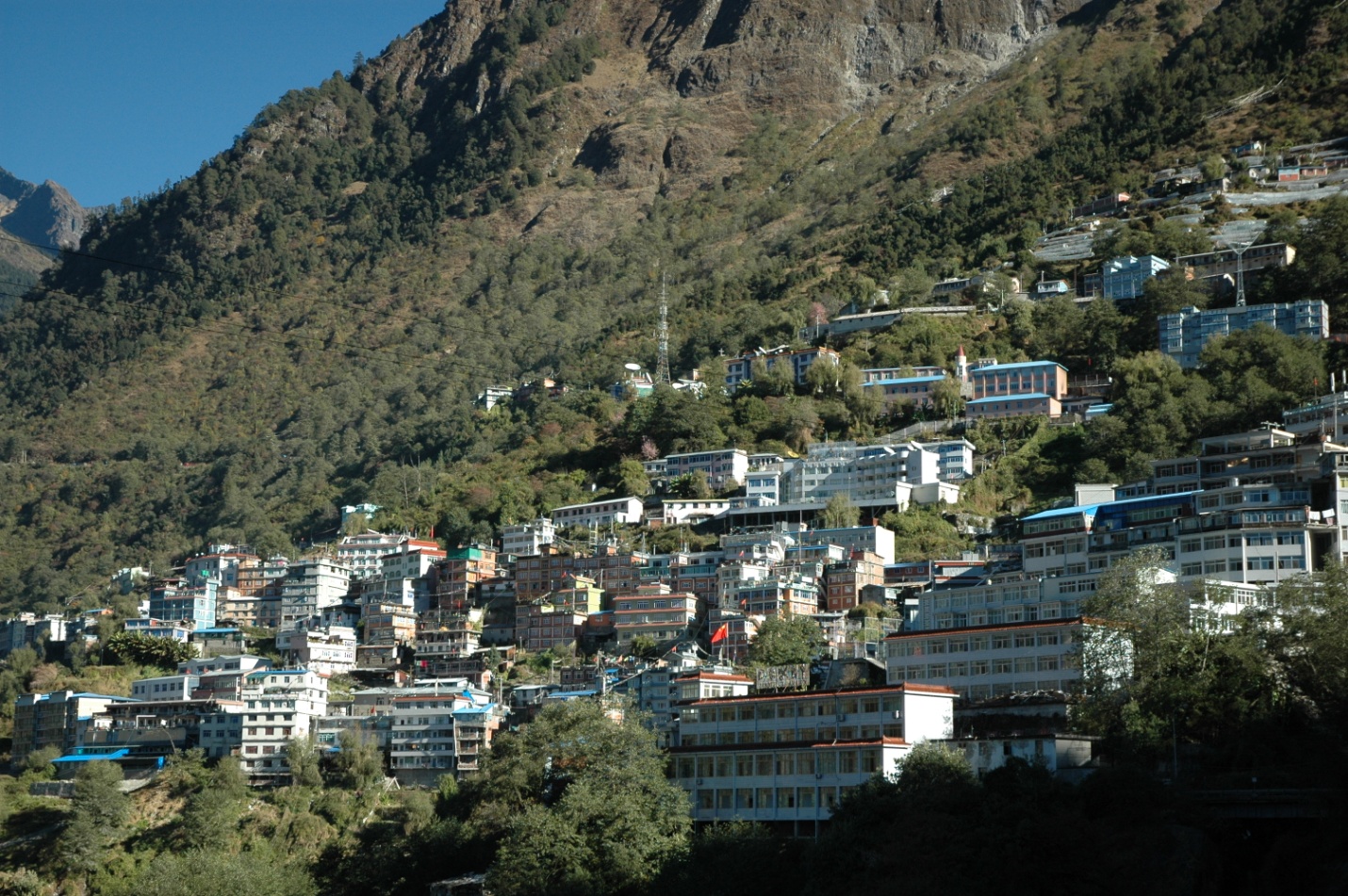
The border itself was a lesson in cultural shifts: On the Chinese side of the border we made our way slowly through queues of trucks and occasional overlanders, long hold ups caused as one truck would jostle for position with an on-coming, occasionally with the hinderance of police and officials. Once we finally made our way to the front of the queue, and the formalities of the border crossing were behind us, we were welcomed into the colour and noise of Nepal. Here, the number of vehicles was even greater, however behind the apparent chaos we noticed that order was maintained by the crowd of passersby. This crowd decided right of way en masse and through a combination of hand gestures, whistles and taps would direct the largest possible volume of traffic into the smallest possible space, apparently without incident: A way of maintaining order that is maintained right through Nepal and into India.
This was hardly the only change we were faced with on entering Nepal. After a month of Chinese austerity, and several more weeks crossing the arid lands of Central Asia, Nepal came as a sensory and emotional shock. Back on the left hand side of the road for the first time since leaving the UK we found ourselves driving past mountains covered in steep terraces of green; beautifully dressed women wrapped in a kaleidoscope of colour; chickens, ducks, goats and cows meandering freely around and over the road; small villages perched wherever the road rounded a sun-trapped ridgeline; trucks brightly painted with the driver’s pet philosophies and favourite Western brands, sounding their customized horns at every corner and passing incident; and to top it all we were finally and blissfully warm. 
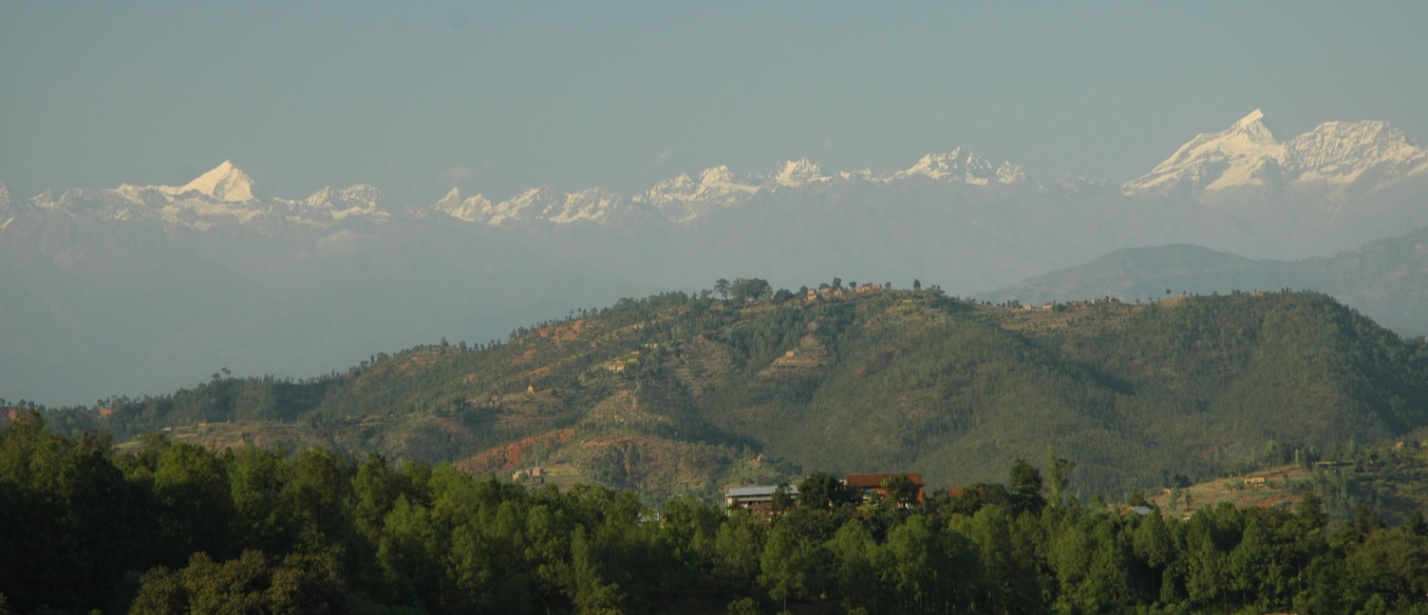
Our day of surprises was culminated with our arrival into Kathmandu. We were soon back to the familiar situation of navigating by guide book – a hopeless exercise when in a car as guide books assume arrival by bus and onwards travel by foot. As a result points of interest are rarely relevant and route hierarchy on the map is determined with respect to the shopping tourist. After an hour of chaotic driving we found ourselves nudging our truck down a pedestrian lane, stall holders moving aside their tables and ground-cloths, friendly locals shifting push bikes and parked mopeds from our path, occasionally laughing at our predicament and shouting encouragement. We passed small shrines and larger temples as the streets got progressively more narrow and busy and the rush hour traffic spilled out of surrounding offices and went shopping, on our road. Finally reaching a road with other cars we surrendered, parking the Landy while Duncan went off in search of a guide and a cycle rickshaw that we could follow with more confidence. The car remained parked for the remainder of our stay in and around Kathmandu. 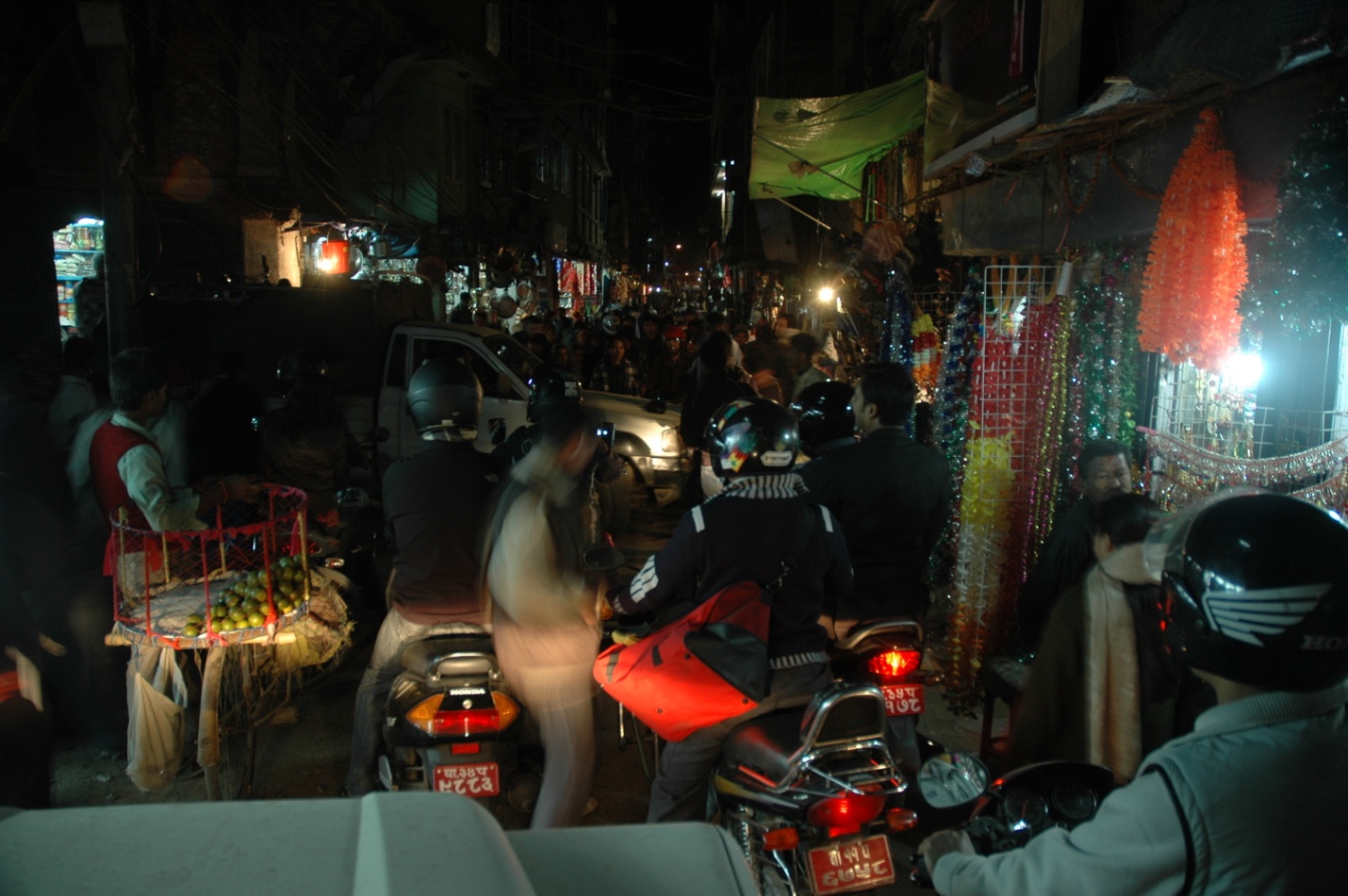
After a month spent in two of China’s more controversial autonomous regions, most of which was spent in Tibet, what was the relationship left in our minds? Tibet certainly left its mark in us, of a beautiful people and complex, strongly held spiritual culture defined by the enormity of its landscapes and the task of life on the high, arid plateau. Perhaps it is because of this geographical foundation that the culture and spiritual belief of its people seems so unshakable. Perhaps it is because of this strength that the contrast with the Han culture is so stark, although there seems no political doubt that the two must evolve to coexist. For our part, we felt unusually honoured to be permitted to pass through this extraordinary land. 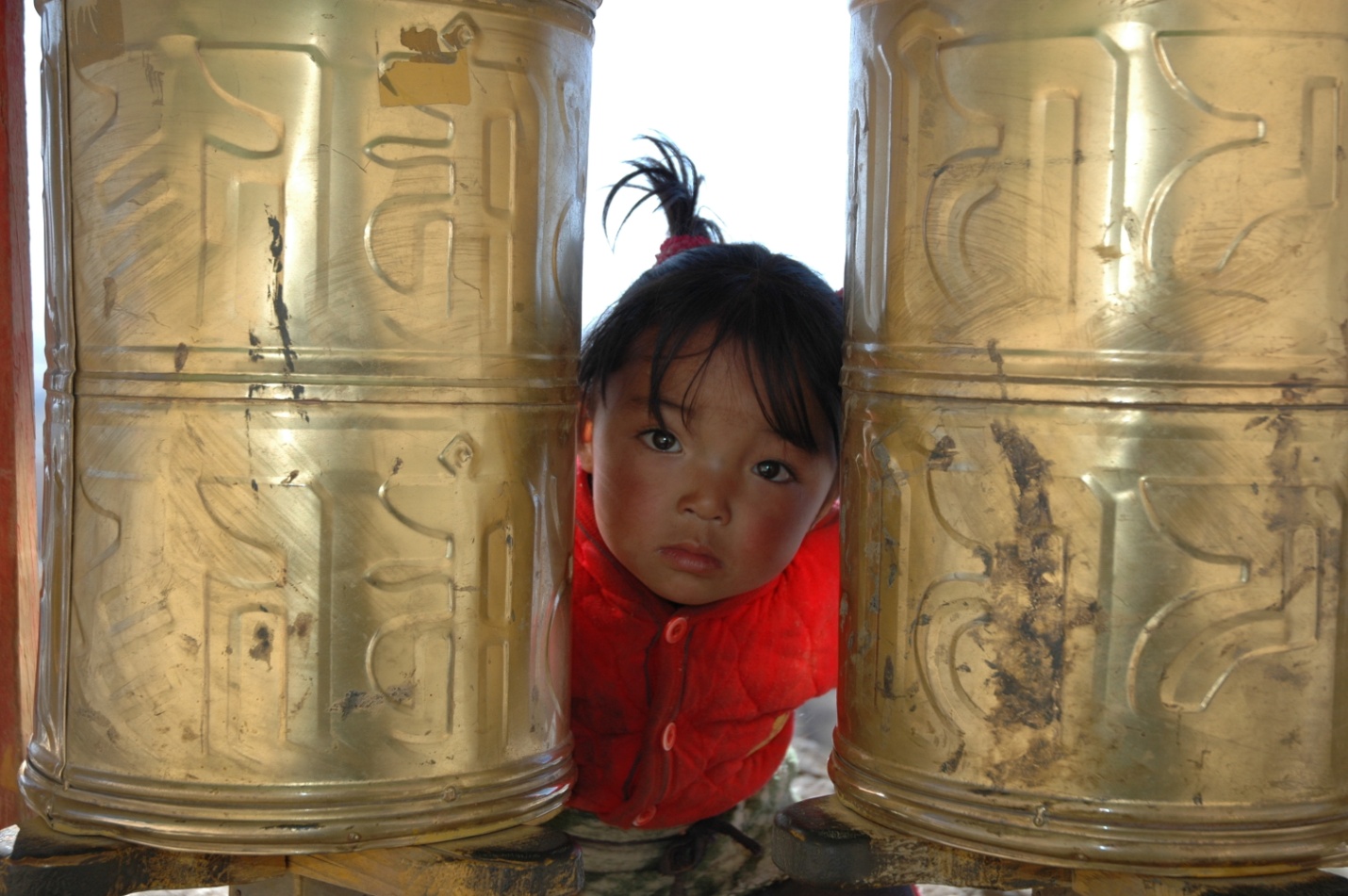
Last Updated (Monday, 15 March 2010 03:18)


